Just like a pressure cooker or a masala daani, a chakla-belan is an essential part of an Indian kitchen. Most of these are built to last and the speed at which the wear and tear happens is much slower.
To test which is the best base for rolling chapatis and parathas, we bought four types of chakla (chapati rolling base) and tested them for their design, ease of cleaning and stability while usage. We tested marble, granite, plastic and wooden bases to find the best chapati rolling board.
Here are our findings.
Table of Contents
Quick Comparison of Chapati Rolling Board
A table showcasing all the different materials of chapati rolling board we tested and the rating awarded to them –
| Type Of Surface | Mishry Rating | Buy Now |
| Marble | 4 | Add to cart |
| Granite | 4 | Add to cart |
| Plastic | 3 | Add to cart |
| Wooden | 2.5 | Add to cart |
Our Review Factors
Our review factors and how we tested the roti chakla is discussed in the section below –
1. Usage
We use a chakla to make rotis, paranthas, or to roll out any other dough. Sometimes we might also use it to cut the dough into strips (example – for namak paare, malabari roti, papdi etc).
- Rolling ease – How smooth is the surface? Is it easy to roll out the dough? Does the dough stick to the surface?
- Stability – Does the chakla move around or wobble while rolling out the dough?
2. Design
The diameter and weight were checked under this parameter. How many legs does it have or is the base/support as large as the diameter of the chakla?
3. Cleaning and maintenance
After we are done with the day’s work, how easy is the chakla to clean? Does it require a soft or hard hand? Any scratches after a few uses?
Our Review Process
Our review process lasted for over 8 weeks. We used all the chaklas in our test kitchen everyday to make half a dozen rotis and a few parathas. They were washed and dried after use. Regular use and washing gave us a fair idea about how it would perform in an average Indian kitchen.
We used the same belan (rolling pin) for all the chaklas to standardize the testing.
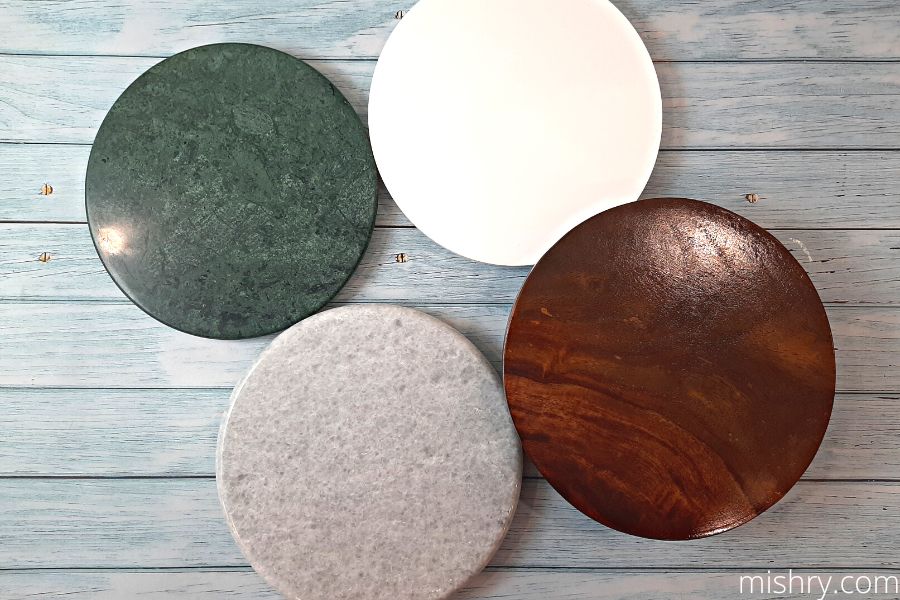
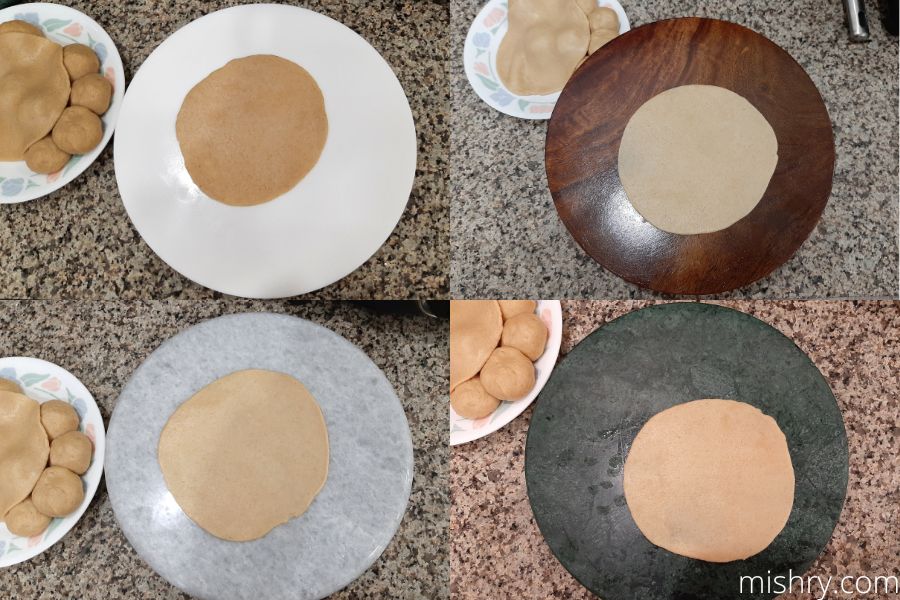
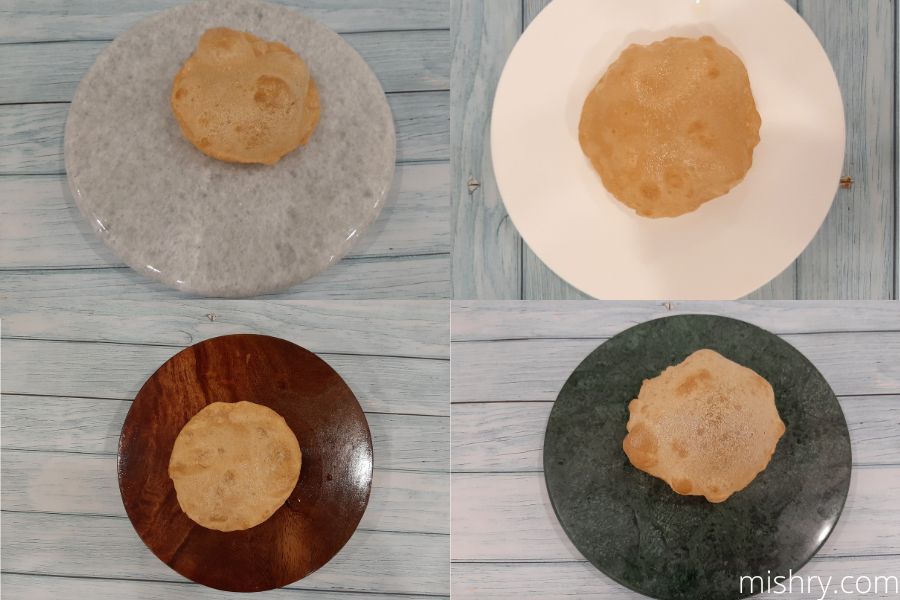
Related reviews – Roti press | Best chakla belan sets
Best Roti Chakla – Detailed Review
Which chakla performed the best during our review and why? Pros, cons and details discussed below –
1. Marble
The marble chakla is the heaviest of all and weighs 2284 grams. It doesn’t have separate legs and is a single piece which makes it a sturdy piece.
This has a smooth surface and a slightly rough base which helps keep the chakla in place and doesn’t let it skid. The parathas roll with ease and the dough does not stick to the surface of the chakla, but the rotis stick to the base slightly. We suggest oiling the base minimally or dusting it with some sookha atta before you start rolling out.
It is extremely easy to clean, dry and maintain. The cleaning sponge glides over it.
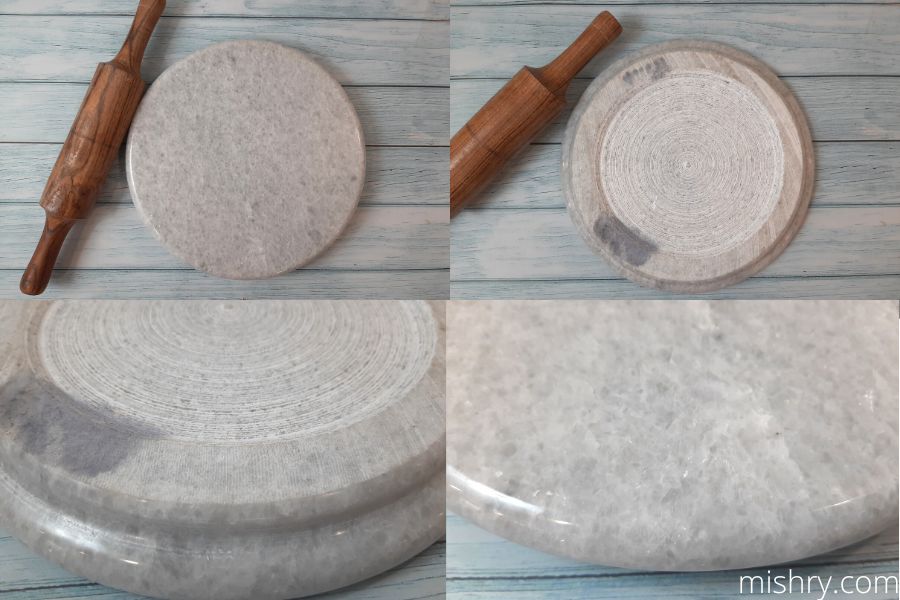
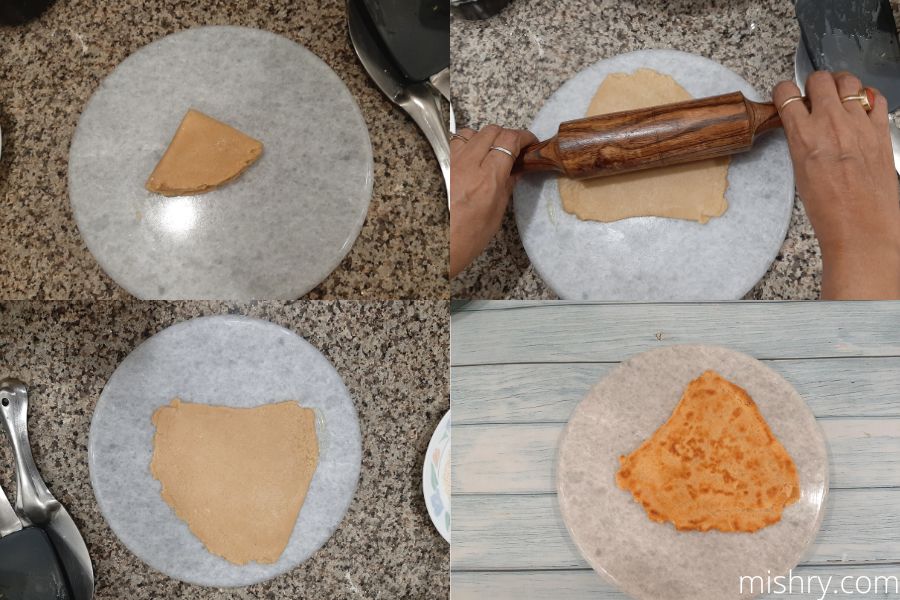
- This is a sturdy chakla.
- We liked how it does not wobble or tilt even after pressure is applied.
- Easy to clean.
- Smooth surface.
The chapati dough is sticking a little, so the base might require oiling/dusting with dry atta depending on the firmness of your dough.
Marble and granite chaklas are best suited for everyday use for making rotis, parathas and more. You can also double this up as a chopping platform occasionally without worrying about scratches.
2. Granite
A green colored chakla which weighs 1879 grams and has a 8.5 inch diameter. This is the second heaviest chakla with a very stable base. It doesn’t have legs, but a full-rounded base that runs along the entire chakla which makes this extremely stable. It doesn’t wobble and doesn’t tilt anywhere even if higher pressure is applied. The smooth surface is very easy to clean and maintain.
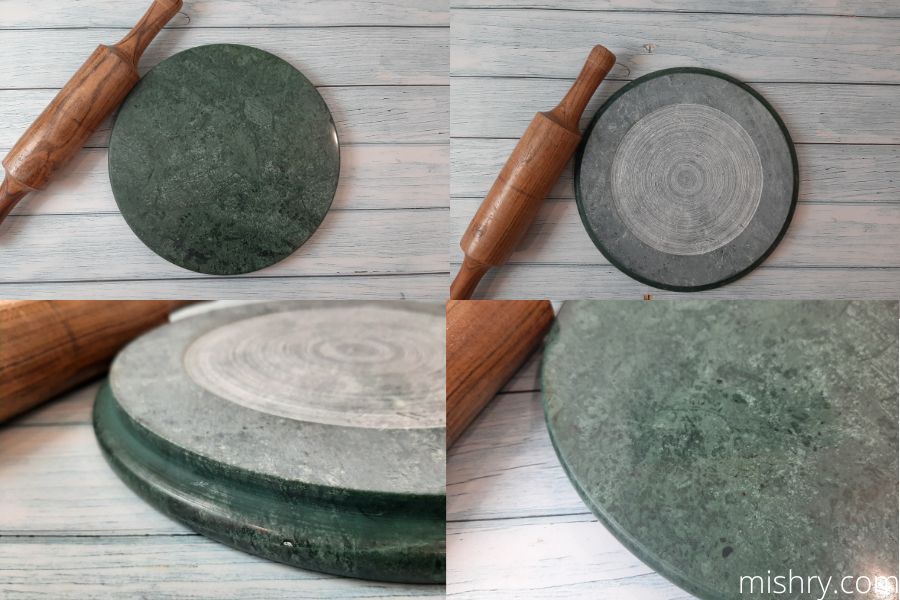
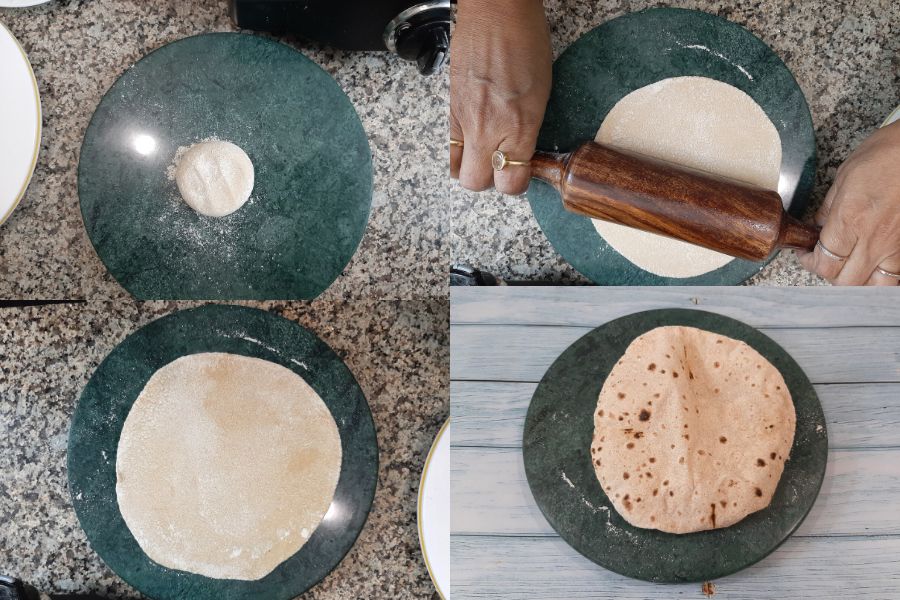
- Stable. It doesn’t wobble or tilt while rolling.
- Very sturdy.
- The surface is smooth and easy to work on.
- Easy to clean.
Auto Amazon Links: No products found.
3. Plastic
The plastic rolling board is very lightweight (485 grams) and sleek. There are three triangle-shaped legs (1 cm height) which have an anti-skid base at the bottom.
Our experience of using this chakla was fairly decent. It is sturdy, made of good quality plastic and doesn’t skid or wobble while rolling the chapatis. It does tilt to one side if you put some extra pressure as it’s lightweight, but not always.
We also noticed that just after 2 weeks of daily use, the anti skid tape at the bottom has started to peel off and it would definitely not sustain everyday use in a regular household where numerous rotis/parathas are made.
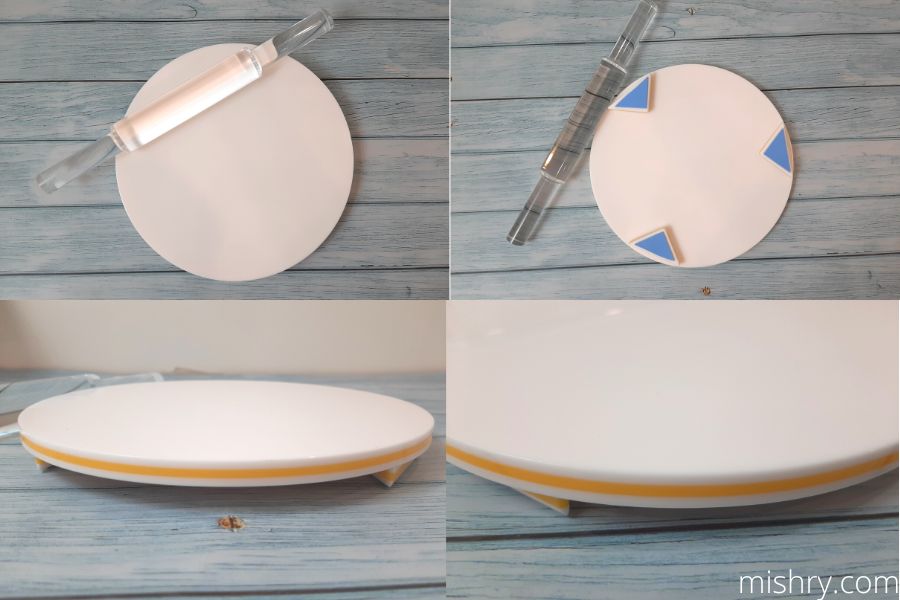
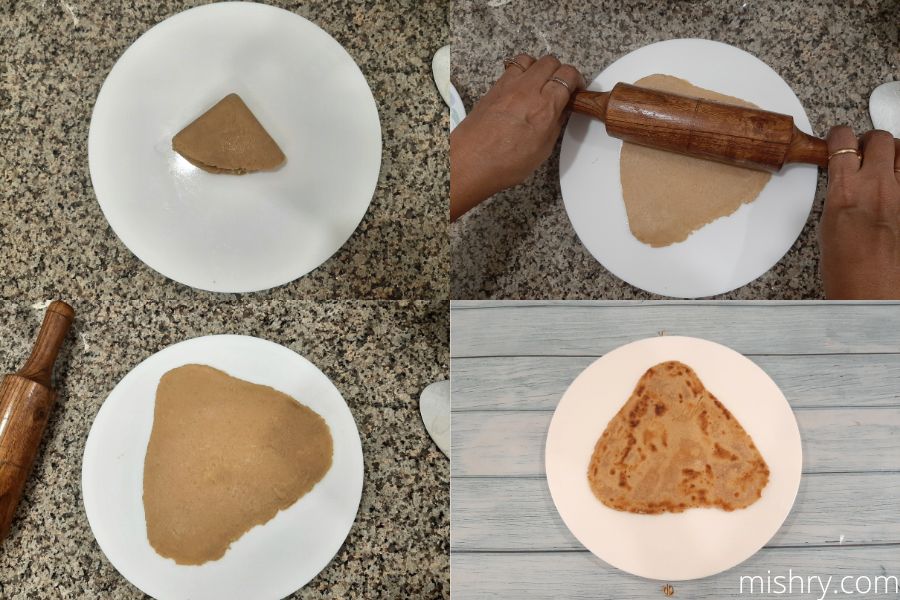
4. Wooden
For us, the design of the wooden chakla did not work because it was not stable. The chakla flipped a couple of times, even with the light pressure we put during rolling rotis. The three legs are definitely not making this a stable platform to work on.
As we all know that we also sometimes double up the chakla for chopping a few things or atleast serrating the parathas with it which can make light knife marks on the surface which would eventually become a breeding ground for bacteria. It is definitely not as stable or long-lasting as our other options. This will also take extra time to dry up after cleaning.
This chakla weighs 683 gms and has a 9 inch diameter. This has three legs (2cmx2cm).
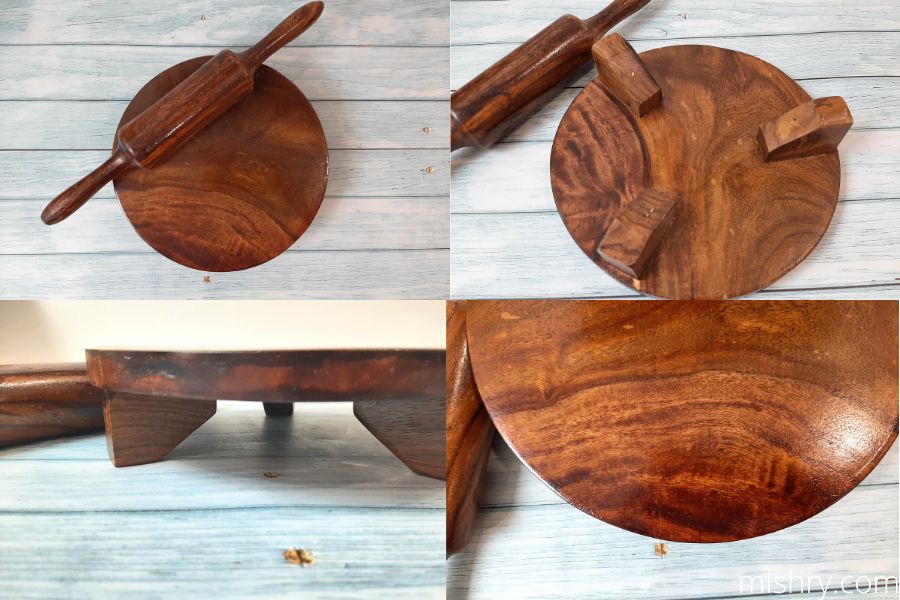
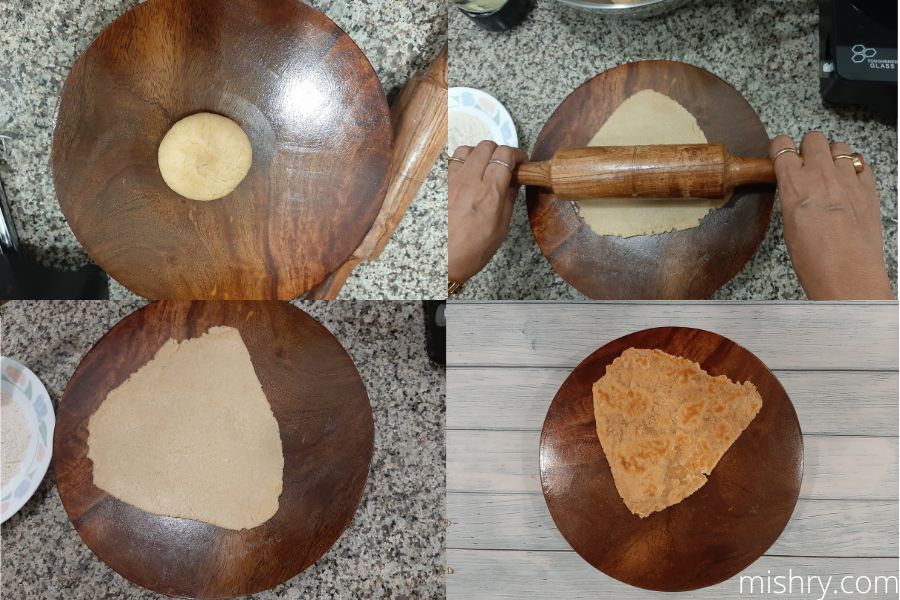
- Not as stable as the other chaklas. This flipped a lot and wobbled during our review.
- Takes much longer to dry.
- If used as a base to serrate/cut the dough for parathas/namak para etc the surface will develop cuts and eventually become a breeding ground for bacteria.
Frequently Asked Questions
Here are some interesting FAQs on best roti chakla.
1. Are these chakla dishwashers safe?
No information has been provided on the pack they arrived in and we did not try washing them in a dishwasher. It is best to wash them by hand.
2. Are these rolling boards smooth?
Yes, all the chaklas/rolling boards are smooth. Over time the wooden chakla might become a little rough if maintained incorrectly.
3. Is the granite in the chakla reactive with food?
No. Granite is not reactive to food.
4. Is this rolling board portable?
Like most kitchen tools and appliances, chaklas can be carried anywhere.
Final Verdict
We recommend opting for the marble and granite chaklas as they are sturdier, make for stable platforms to work on and are very durable. These are easy to clean and maintain as well.
Which chakla/rolling base do you use in your kitchen? And why did you pick the particular material? Tell us in the comment section below.
Our reviews are unbiased and all samples used during the reviews were paid for by us. Read our entire ethics statement here.





